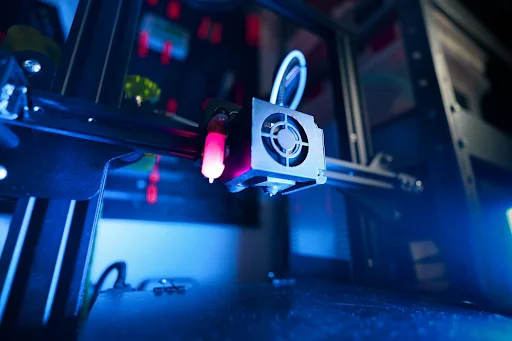Laser engraving has become one of the most precise, versatile, and creative methods for adding detailed designs to various materials. Whether it’s marking intricate patterns on metal, personalizing wood gifts, or cutting through acrylic sheets, the laser engraving laser is the driving force behind the magic. But how does this technology actually work? And what should you know before choosing a laser engraving machine for your projects?
In this article, we’ll explore the core science behind laser engraving, its applications, and an introduction to one of the leading product ranges in the market, the Creality Falcon series.
Before you go, this next article might answer your next question.
1. What is a Laser Engraving Laser?
A laser engraving laser is a concentrated beam of light that’s focused onto the surface of a material to either vaporize, melt, or burn it in a controlled manner. This high-energy beam allows you to create permanent markings or cut through materials with extreme precision.
The word LASER itself is an acronym for Light Amplification by Stimulated Emission of Radiation. In engraving, the laser acts like a chisel but instead of a physical tool, it uses light to carve the design.
2. How Does Laser Engraving Work?
The process involves three primary steps:
- Generating the Laser Beam
A laser source, such as a diode, CO₂ tube, or fiber optic system, produces a highly focused light beam. - Directing the Beam
Mirrors, lenses, and a motion control system guide the laser beam onto the material’s surface. - Material Interaction
When the beam hits the surface, the concentrated heat alters or removes material in the exact shape of the design, which is usually sent to the engraver from specialized software.
3. Types of Laser Technologies in Engraving
Understanding the type of laser engraving laser technology is key to picking the right machine:
- CO₂ Lasers:Ideal for non-metal materials like wood, glass, acrylic, and leather.
- Fiber Lasers: Perfect for marking metals and some plastics with extreme precision.
- Diode Lasers: Versatile, affordable, and portable; great for hobbyists and light commercial use.
4. Benefits of Laser Engraving Technology
Laser engraving stands out because it’s:
- Highly Accurate: Micron-level precision allows for intricate designs.
- Versatile: It can work with wood, metal, glass, stones, acrylic and leather.
- Non-Contact: No physical wear and tear on tools.
- Durable Results: Designs don’t fade or rub off easily.
- Eco-Friendly: Minimal waste and no harsh chemicals required.
5. Real World Applications of Laser Engraving Lasers
Laser engraving lasers are used in:
- Industrial Part Marking: Serial numbers, QR codes, and logos on tools or machinery.
- Jewelry & Gifts: Personalized rings, watches, or plaques.
- Signage & Branding: Company logos on wood or acrylic boards.
- Creative Arts & Crafts: Custom décor and unique designs.
- Prototyping & Manufacturing: Engraving labels or identifiers on prototypes.
6. Key Features to Look for in a Laser Engraving Machine
When selecting your laser engraving laser system, consider:
- Power Output: Determines engraving depth and cutting ability.
- Work Area Size: Bigger projects need larger engraving beds.
- Material Compatibility: Ensure the laser type suits your material.
- Software Integration: Look for user-friendly control software.
- Safety Features: Protective enclosures, emergency stops, and air assist systems.
7. Introducing the Creality Falcon Laser Series
While there are many laser engraving options on the market, the Creality Falcon range has gained attention for blending advanced technology with user-friendly features.
Falcon CR
A budget-friendly option, perfect for beginners who want a reliable engraving experience without steep learning curves.
Falcon A1
Equipped with auto material recognition, enclosed safety housing, and live camera preview for precise alignment. Great for both beginners and pros.
Falcon2 Series (22W & 40W)
Engraving lasers with air assist built in, powerful enough to cut thicker material cleanly, and can engrave very fast.
Falcon2 Pro 60W
An industrial grade powerhouse designed for professional production environments, offering deep cutting and fast engraving on almost any material.
These machines provide flexibility for hobbyists, small businesses, and industrial users all while maintaining exceptional precision.
8. Safety Considerations When Using Laser Engraving Lasers
Even though laser engravers are easy to use, safety is crucial:
- Wear protective eyewear designed for your laser type.
- Operate in well-ventilated areas or use fume extractors.
- Never leave the machine unattended during operation.
- Keep flammable materials away from the work area.
- Follow manufacturer guidelines for maintenance.
9. Future of Laser Engraving Technology
The laser engravings laser market is evolving rapidly. New advancements in AI-assisted design, higher energy efficiency, and more compact machine designs are making the technology accessible to a broader audience. Portable and multi-functional engravers will continue to bridge the gap between hobbyist and industrial needs.
Conclusion
Understanding the technology behind the laser engraving laser is the first step toward choosing the right machine for your needs. Whether you are starting a small business, upgrading your workshop, or exploring creative hobbies, laser engravings offers unmatched precision and versatility.
The Creality Falcon series stands as an example of how modern machines combine high performance, safety, and ease of use, making them a strong contender in today’s market.
By learning how these lasers work and what features matter most, you’ll be better equipped to select a machine that turns your creative ideas into reality.
FAQs
1. Is laser engraving safe for all materials?
No. Some materials, like PVC, release toxic fumes when engraved and should be avoided.
2. How long does it take to engrave an item?
It depends on material type, design complexity, and machine power from a few seconds to over an hour.
3. Can I engrave photographs with a laser?
Yes, with the right settings and resolution, you can engrave detailed images on wood, glass, and more.
4. How long does a laser tube last?
CO₂ laser tubes typically last 2,000–10,000 hours, depending on usage and maintenance.
5. Do I need an expensive machine for good results?
Not necessarily. Even entry-level models like the Falcon CR can deliver excellent engraving quality with the right setup.
Want more insights like this? Head over to 2A Magazine and start exploring.







